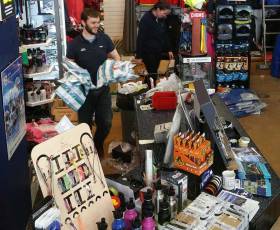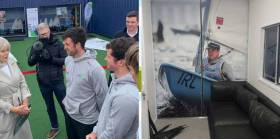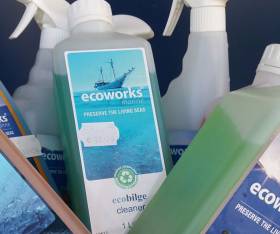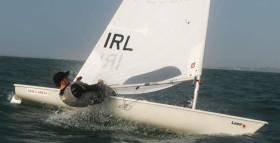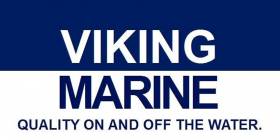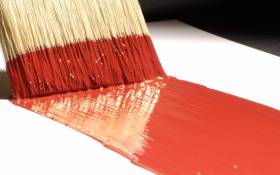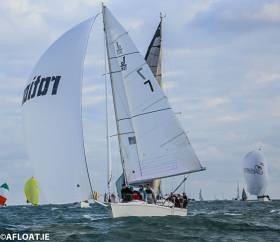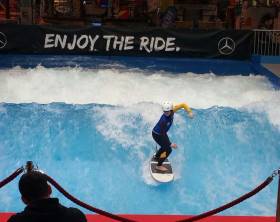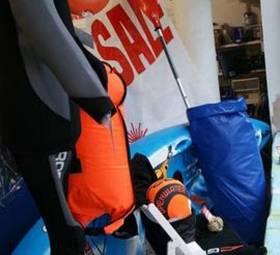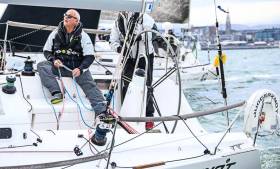Displaying items by tag: Viking marine
Viking Marine Stock up for Dun Laoghaire Lift-In
It's like Christmas with the number of boxes full of our new summer stock arriving into Viking Marine in Dun Laoghaire on Dublin Bay this week!
We have new product ranges, new suppliers and ongoing innovation from current and new - all just in time for the launching season!
Call in and check it out!
Rio Laser sailor Finn Lynch who is campaigning for a place in Tokyo 2020 and who is a Viking Marine Brand Ambassador has endorsed the opening of the new Irish Sailing High-Performance centre (pictured above) for the Olympic Sailing team at Dun Laoghaire.
According to Lynch, the HQ is a 'huge milestone for Irish sailing and a legacy that came from the great results at the Rio Olympics'.
'When we stepped over the line into the HQ last week we were buying into a set of standards that we as a group of sailors had developed'. The HQ has given us all the facilities we need to succeed and now it is up to us as the sailors to make it happen. And so, 'If it is to be - it's up to me', the National Yacht Club sailor declared.
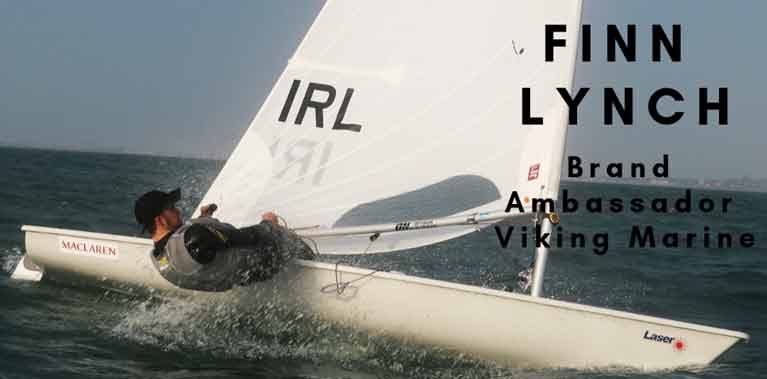
It’s St Patrick’s Day weekend and Viking Marine is going green!
Check out Viking Marine’s new green Ecoworks range of cleaning products just in time for getting your boat ready for the new season.
These environmentally safe cleaning products come with a free spray bottle so you can dilute the concentrate and clean away till they’re all home from the parade.
If you have any questions on application or uses, just ask us in the shop at The Pavilion in Dun Laoghaire.
Viking Marine will be open all bank holiday weekend for anyone working on boats — today till 6pm and Sunday and Monday from 1pm to 5pm.
Viking Marine Announce Olympic Sailor Finn Lynch as Brand Ambassador for Dublin Chandlery
Viking Marine, the leading Chandlery and ‘go to’ for all things sailing in Dun Laoghaire have just announced Olympic sailor Finn Lynch as Brand Ambassador. Just home from a great campaign in Miami this month, Finn was back in action training all last week on Dublin Bay.
Ian O Meara, MD of Viking Marine, is an avid sponsor and supporter of sailing in Ireland. ‘Finn is a perfect brand ambassador for Viking Marine and truly represents all that is great about Irish Sailing – he is a true professional, his attention to detail is second to none, he is such a talented athlete and sailor and a great role model for sailors young and not so young, like me’, says O’ Meara.
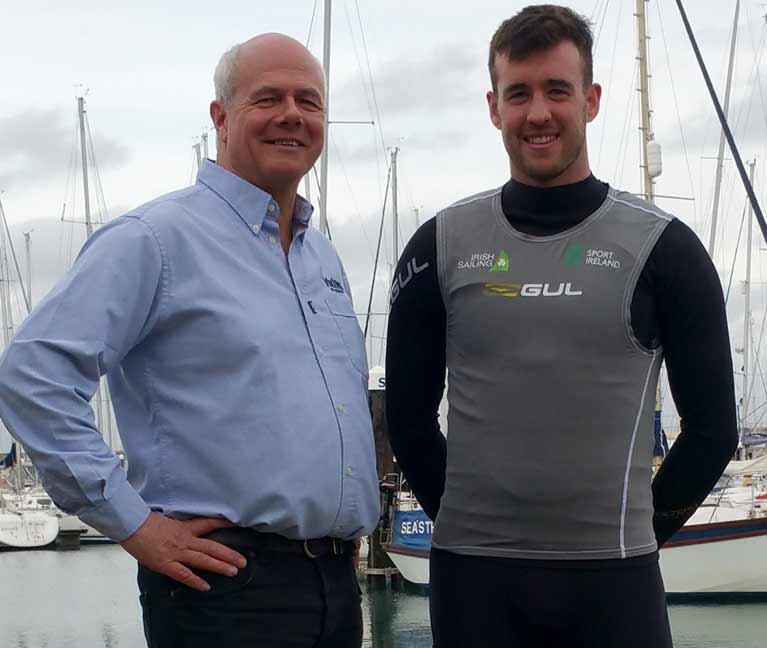 Viking Marine's Ian O'Meara (left) with the Dun Laoghaire chandlery's newly appointed Brand Ambassador Finn Lynch, a Rio Olympian in the Laser Class
Viking Marine's Ian O'Meara (left) with the Dun Laoghaire chandlery's newly appointed Brand Ambassador Finn Lynch, a Rio Olympian in the Laser Class
Furthermore, we love to see Finn coming into the shop, a great man to give feedback on what works and what doesn’t work on the boat whether that’s in training or racing. We love this kind of feedback, straight from the user, our customer.
"I have been going in and out of Viking Marine pretty much all my sailing life"
‘I have been going in and out of Viking Marine pretty much all my sailing life,’ says Finn. To be a brand ambassador for Viking Marine is great, giving me access to so much equipment and kit that I need to keep me on the water and at my best. And it's on my doorstep, perfect really’
Viking Marine both in their shop in Dun Laoghaire and their Boat Sales and Service business in Kilcoole are committed to supporting access to the water for all keen sailors and water enthusiasts. They continue to research, source and supply the best manufacturers and brands and with over 100 years of experience amongst the team at Viking Marine it is still the number one ‘go to’ for all sailors and water enthusiasts.
Get Ready For The New Season With Viking Marine’s Pre-Launch Checklist
With the countdown to launch well under way, Viking Marine provides a handy checklist below to help with your own to-dos getting your boat ready for another season’s sailing.
Stock is now arriving in-store and online at VikingMarine.ie for all your boating needs, whether it’s antifoul paint, hull cleaner and polish/wax, wood varnish and oil, ropes and rigging, blocks and winches and more.
Ring 01 280 6654 or pop in at The Pavilion in Dun Laoghaire for any tips or advice you need. Viking Marine can also source and place orders for almost anything you might need to get your boat pre-launch ready.
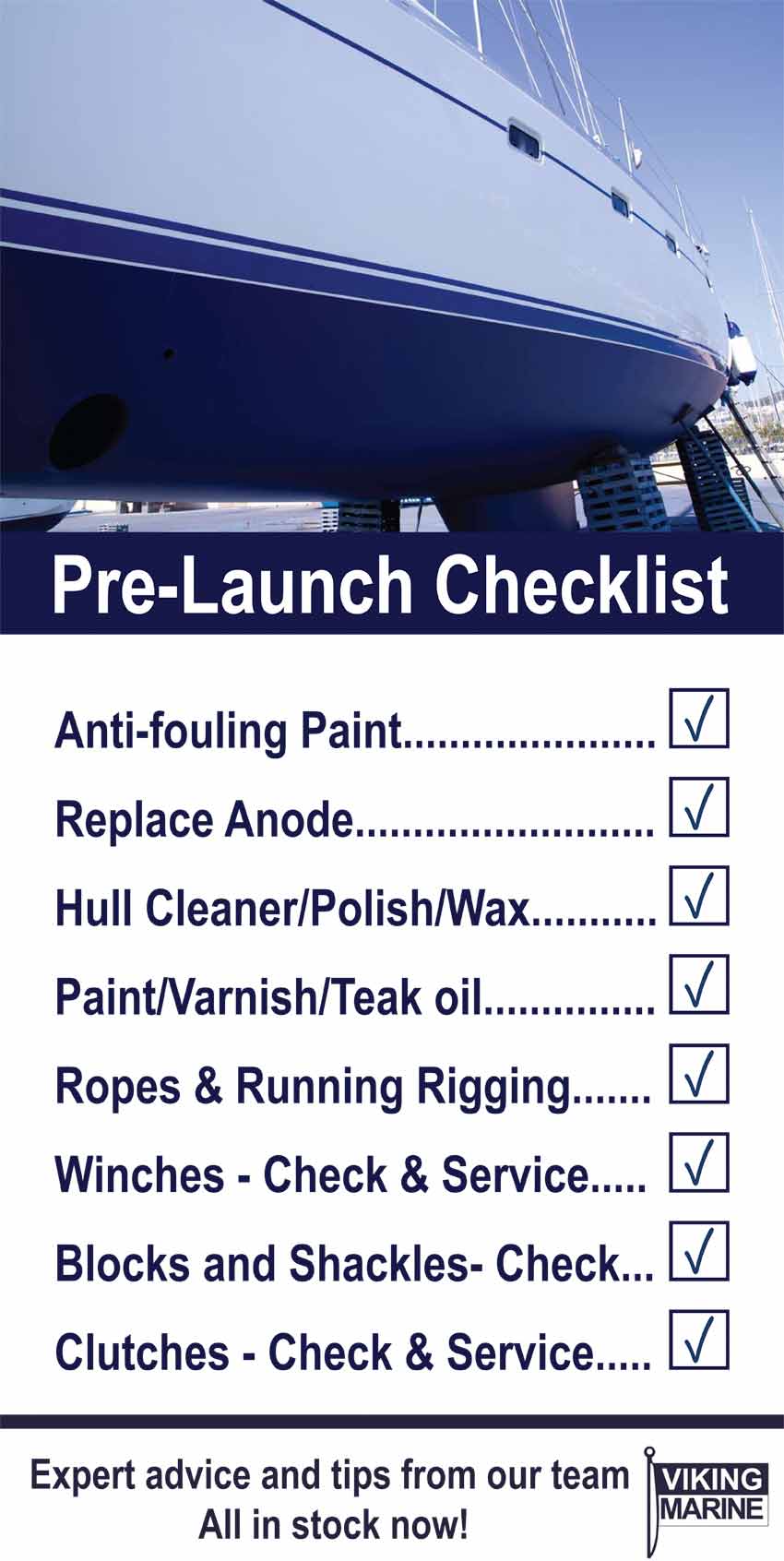
Get In The Red For Valentine’s Day With Viking Marine
If red is to be your colour this season, then Valentine’s Day is the day to buy your red paint from Viking Marine.
To celebrate Cupid, the Dun Laoghaire chandlery is offering 20% off red paint purchased in store on the day this Thursday 14 February.
This offer applies to any International red paint, topcoat or antifoul. And to share the love, there is a limit of max two tins per purchase.
See the full range of paints available from Viking Marine HERE.
DBSC Spring Chicken Series Underway on Dublin Bay
This morning's DBSC Spring Chicken Series got off to a gentle start in light to medium westerlies on Dublin Bay for the 38-plus boat fleet.
The regular mix of contestants were joined by Iduna, an 80–year–old Lymington L Class design. Viking Marine are prize sponsors again this year and 'Vicky Marine' (pictured below) is not shelling out crystal or silver prizes, but the very useful Dexshell range of hats and gloves to keep winners extremities warm. See the full range from Viking Marine here
See the starting order and initial handicaps for the first race below.
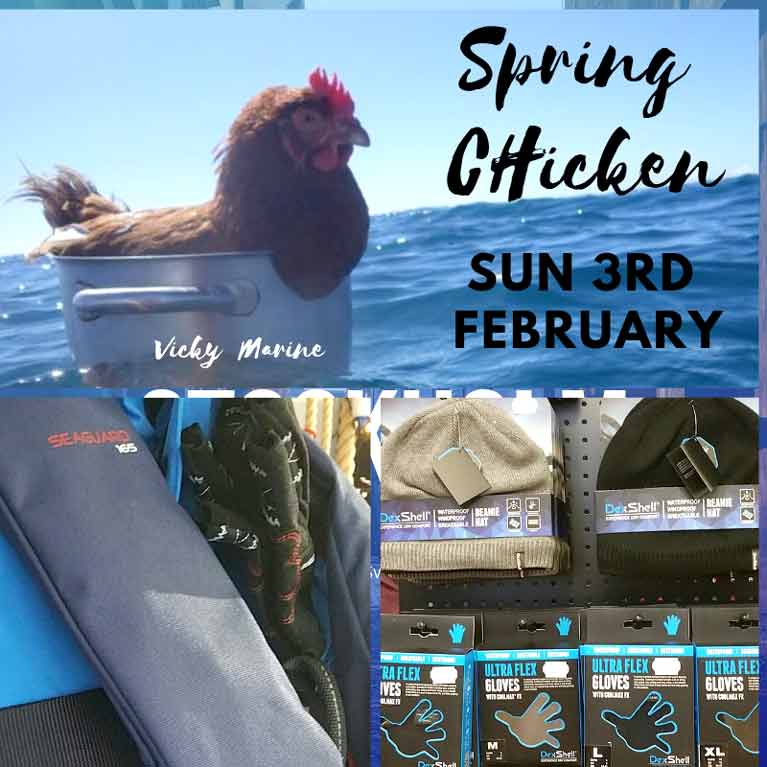 (Top) New vessel 'Vicky Marine' sets sail for the Spring Chicken Series and (above) some of the Series prizes on offer from Viking Marine
(Top) New vessel 'Vicky Marine' sets sail for the Spring Chicken Series and (above) some of the Series prizes on offer from Viking Marine
Race two of the National Yacht Club hosted six-race event sponsored by Citroen South Dublin takes place next Sunday.
The Viking Marine Trip to Boot 50
In making a quick exit to the airport last Wednesday and realising I had forgotten a show proof pair of shoes I grabbed a new pair of Dubarry Clippers. Having done over 19,000 steps on day one I was not suffering from tired and aching feet, my shoes and I were still friends. Thanks, Dubarry, great workmanship.
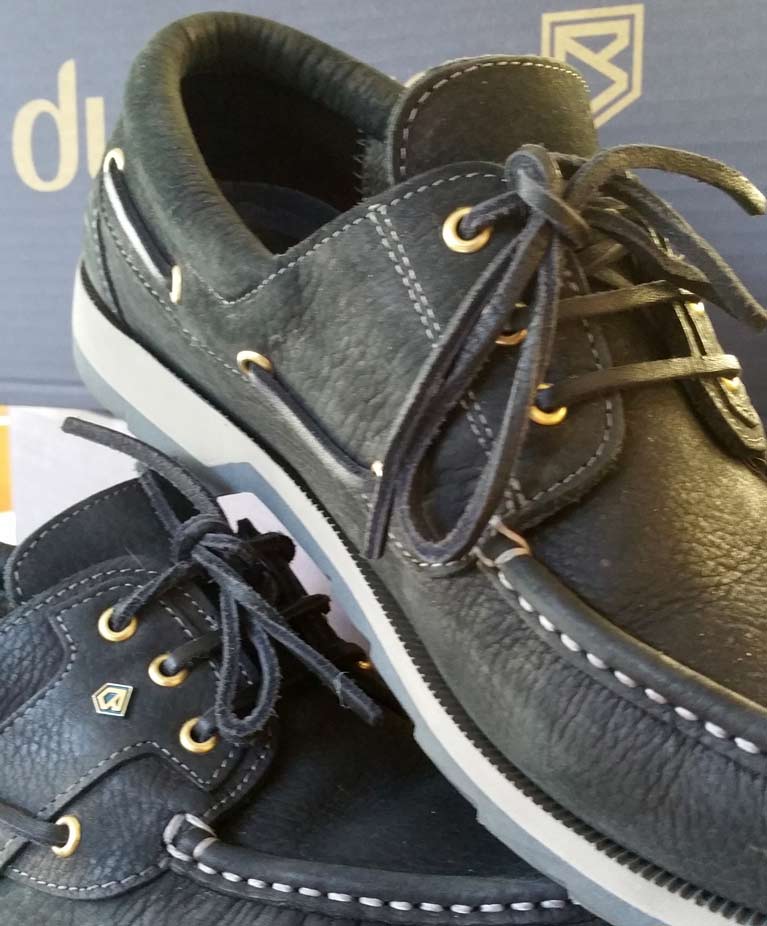 Boat show proof Dubarry deck shoes
Boat show proof Dubarry deck shoes
We found some great new products at the show and will keep you posted as we launch them in the shop and online - chandlery, clothing, safety equipment and new products to the market. Interesting to note that 'sustainability', 'recycled' and 'ecologique' is now part of many of the brand stories. Many exhibitors were making big noise in this area as a unique point of difference. Save Our Oceans had a very impressive pitch at the show and lots of evidence to suggest we will see more of this.
Many of our suppliers were exhibiting and drawing crowds with some great demonstrations including; Spinlock, Topper, Rooster and Helly Hansen.
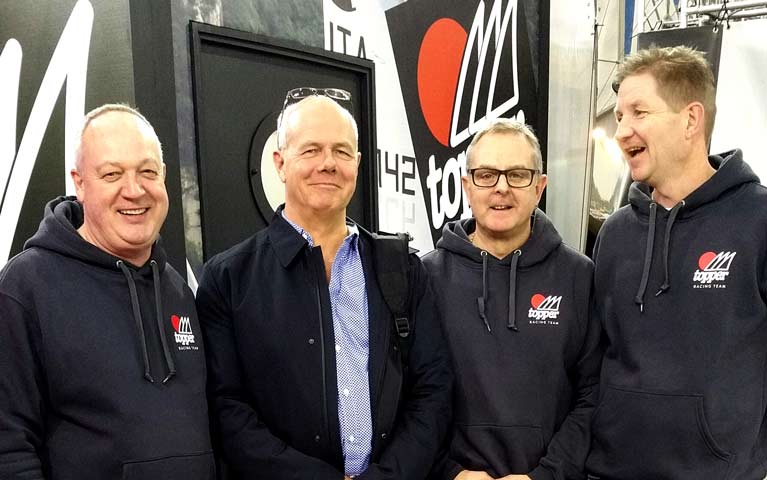 Ian O'Meara (second from left) with the Topper team in Dusseldorf
Ian O'Meara (second from left) with the Topper team in Dusseldorf
There was a strong and diverse Irish presence at Boot 50 including MGM Boats, BJ Marine, Anchor Dive Lights of Donegal, Latitude Kinsale and Donegal Tourism.
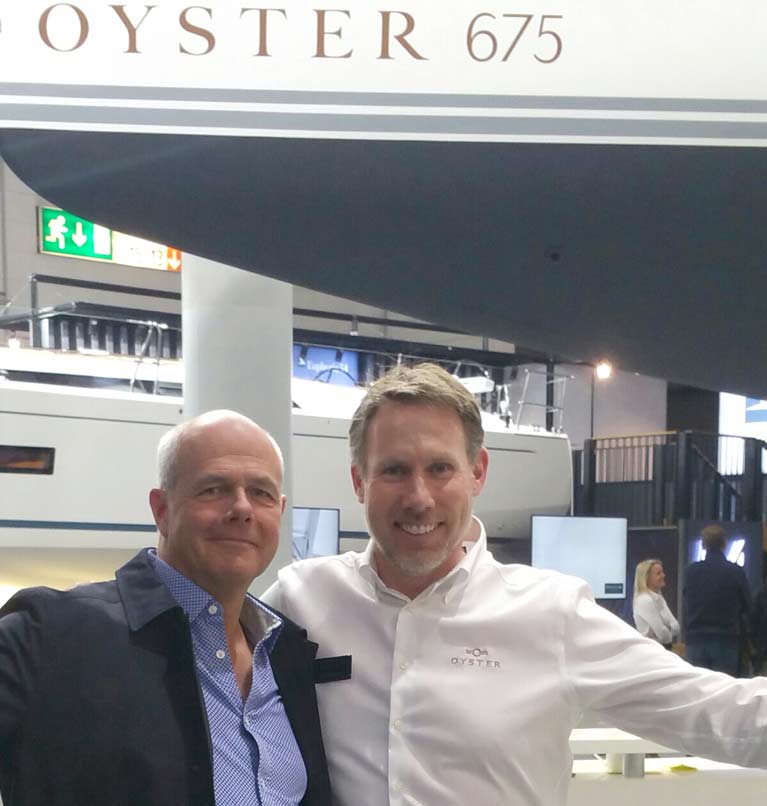 Ian with Paul Adamson (right) of Oyster Yachts
Ian with Paul Adamson (right) of Oyster Yachts
And as the last show before the sailing season opens, it was great to meet up with some old pals Paul Adamson now with Oyster Yachts and the team at Topper.
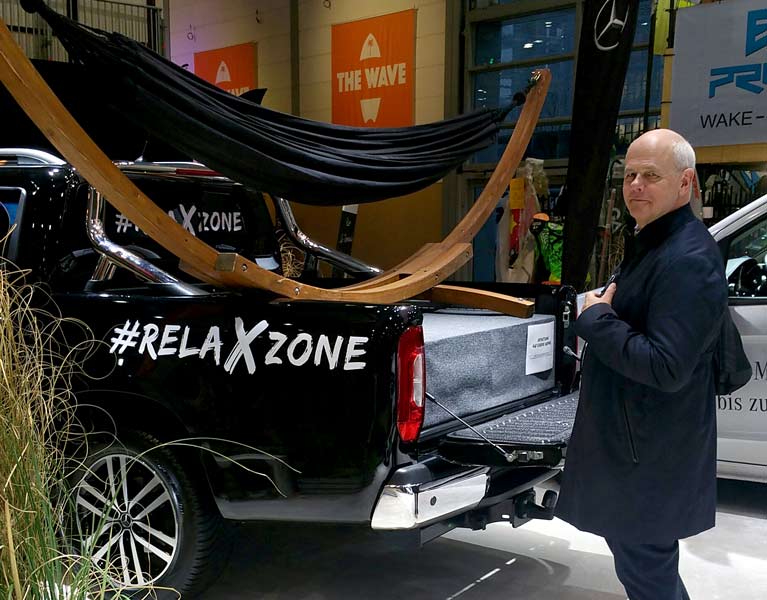 What show is a show without a bit of dreaming? The Viking Marine run around complete with hammock!
What show is a show without a bit of dreaming? The Viking Marine run around complete with hammock!
Sailors Turned Swimmers Are all Kitted Out for Drop in Temperatures at Viking Marine
Some of us here in Viking Marine are braving the Forty Foot bathing place on Dublin Bay every morning and have to admit to nearing addiction on the daily plunge writes Ian O'Meara. Porridge is even back on the breakfast menu despite the most awful boarding school memories of lumpy gruel.
The best learning of all is that hats, gloves and socks as worn by the seasoned and learned folk in the Forty Foot vastly improves length of time in the water. So the days of being termed a 'teabagger' - the dip in dip out are over. God bless neoprene!
Our range of sea swimming gear is all on sale just in time for the drop in temperatures due this weekend and over the coming weeks. Perfect timing! More on our collection here
Ian at Viking Marine’s Top 3 Wishes for the 2019 Boating Season
If Santa had read my letter I guess I would be penning this piece mid-ocean so guess he just couldn’t read my handwriting!
Being asked what my top three wishes are for 2019 came very easily:
- Improved access to the water for everyone. Whether it’s in an ocean racing yacht, a dingy, a paddle board, a pair of togs. There is evidence of progress in this area and it is an agenda close to my own heart. We in Viking Marine will be working hard to support, promote, sponsor and enable with all key stakeholders (Clubs, Groups, Associations, training bodies, Schools etc) to get more people on the water year on year.
- Get our act together and not just clean but Save our Oceans. I look at ‘Flossie and the beach cleaners’ and take pride that our young sailors and ocean lovers have forced us all into action. The days of talking and posturing are over and it's now time to act. We will be promoting, sponsoring and actively engaging in activities to ensure all of us as ocean users play our part in saving our oceans and seas.
- Safety on the water while having great fun and great wins for the competitive amongst us. As a parent, a sailor, a retailer and of late, all year round Forty-Foot swimmer on Dublin Bay, safety is a frame of mind but we all need the constant reminding and innovation in this area.
We will keep you all posted on our activities in my top three all year through our shop window, online, social media and newsletter. Watch out for new products, product launches guest speakers, product trials and much more.
Here’s to a clean, fun, competitive and safe year on and in the water. And here's a photo of Barcolona Regatta 2018 on the Adriatic (below). Great fun and one to add to the bucket list)
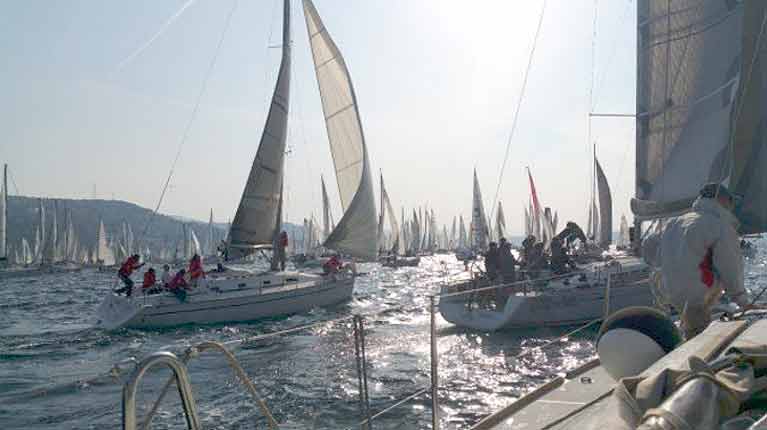 Barcolona Regatta 2018
Barcolona Regatta 2018


























